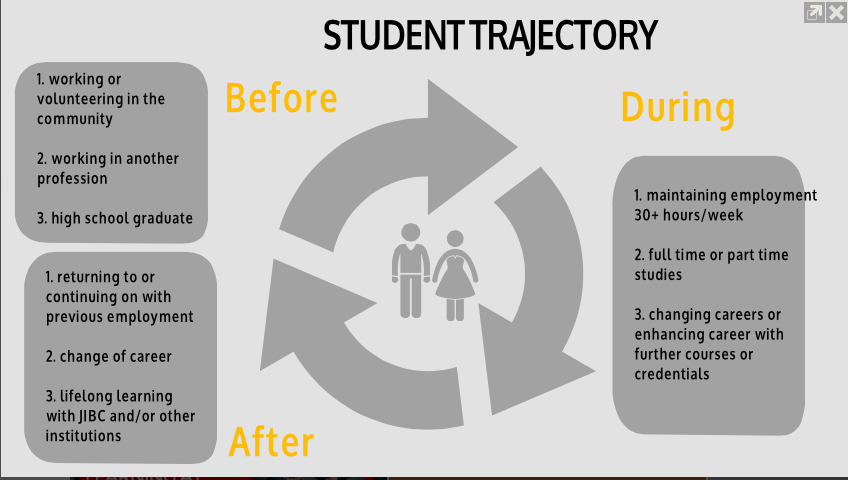Some ideas for creating a culture of innovation
In my last post I mentioned the importance of the idea of third spaces in creating a culture of innovation and in removing barriers to innovation. I focused solely on the T & L centre as an obvious starting point for a third space or facilitative boundary object, partly because I really wasn’t in the mood to get into how IT departments, steering committees, etc can be so inhibitive, even if they try to be on board with innovation. I find that often these inhibitive structures don’t really know how to be facilitative of innovation, and like T & L centres need some transformation. As the new Director/VP of innovation you can’t always dismantle these structures, or blow them apart and start over, so what can you do to keep innovation from devolving to a project (see first post as to why innovation shouldn’t be a project) that only you care about?
I see this as a series of steps with various inherent mechanisms. Some of these might seem to be a bit obvious, so bear with me.
Talk to people and find the innovation on the fringes: Chances are there are some people in your institution doing some really interesting, innovative stuff that not many people know about. Find out why that is, how they are getting stuff done, and what is getting in the way. Then figure out how you will be able to help them move from the fringes to key examples of people doing great things that the institution supports. You might also find out (as I did on more than one occasion) that something that they are doing that wasn’t on your innovation radar should be a key initiative.
Support the people who want to do some great stuff, but have no idea how to get going or get the support they need. Higher ed by design is full of smart, creative people who want to do cool things. But sometimes the smallest things become barriers to getting them to implement their ideas. For example, I’ve come across a situation where a faculty member’s amazing idea required purchasing a 500$ flip camera that he couldn’t get his department to buy. His idea was simple, cheap, and would have had a great effect on student learning. Making sure you have some budget for supporting people on the cheap is a great way to get some quick wins and momentum – in the first year we did this we were able to support 5 or so projects with less than $3000, and these projects became highly showcased and lead to other great developments.
Don’t kill the innovators with process: In our T & L Centre we have an innovation pilots initiative (see above) where people with ideas can access money and/or expertise support in order to try out their idea. This is available at any time of the year…there are no calls for proposals, blessings by committees, or long discussions about what ifs. We don’t require success, in fact we let them know that they are allowed to fail. But since it’s not a free for all, we have a one page project plan that is filled out. Knowing that this is a barrier for people with little time, we ask them to come to a one hour meeting with us where they tell us verbally what they want to do and what they need from us, and we fill out the form for them in the meeting. Our one pager covers the following:
Strategic Goals Addressed – what Academic plan, strategic plan or ed tech plan does the project align with
Purpose of the pilot—what is the problem/s you are trying to solve?
How are you planning on doing it?
Equipment/people needs
Evaluation: How you will know if it is successful/not successful?
Timeline
We find that this process becomes a collaborative conversation between the people with the idea and the people that can support it, and sets the right tone for the relationship and the project. We want people to feel empowered by the step they’ve taken rather than intimidate them with “how are you going to do this, what if XYZ happens…”
Pilots are your friend: At every institution I’ve worked with, small innovative ideas have a habit of becoming complexified when certain stakeholders throw the but what ifs, the we can’t becauses, and the but we don’t haves. Often this is a fear driven reaction to culture where unknowns are viewed as a risk. To counter this, I’ve had good success with using pilots as a sort of boundary object that is introduced as a way to alleviate fear of failure. Pilots by definition are ways of trying things on and figuring out whether an idea is worth pursuing through more formal channels, once a good assessment is made of the value and potential to the institution. I like to point out that they are actually a low risk way of innovating in that they give the institution time to properly assess and learn about whatever is being implemented.
The other nice thing about pilots is that as Director/VP of Innovation you probably have a good idea of some must-have tool/innovation that you want to introduce to the institution, but don’t quite yet have the buy-in. You can keep a tool/innovation in pilot until it has enough momentum and buy-in to transition it successfully to being institutionally supported. Basically, once it becomes indispensable to the institution (WordPress in our case) you have plenty of examples to demonstrate your case without trying to convince people why the tool is needed. Keep in mind that the key with this whole approach is that you need to have the authority to initiate and support pilots. Finally, pilots are useful in showing that you actually do have a process and guidelines for introducing innovation to your institution – this is important because you don’t want people to think that you are jumping on any new shiny thing without having thought about it, or that you are shoving your favourite pet technologies/innovation onto the backs of already busy people.


